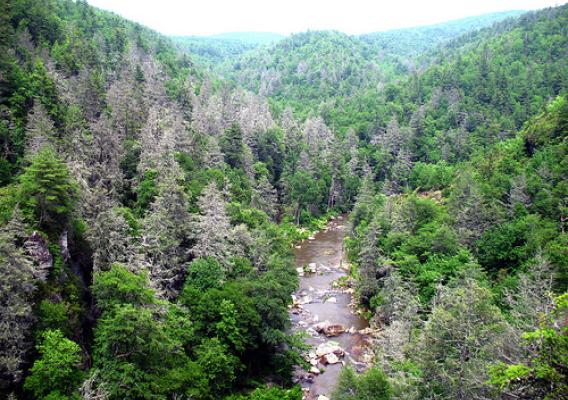Residents of the Appalachian Mountains of the eastern United States have long enjoyed a rich culture of storytelling. Often rooted in a deep connection to the natural world, stories from Appalachian folklore serve to entertain as well as to educate; sometimes, important life lessons emerge, especially from tales of demise. A present-day ghost story from the southern Appalachians has captured the attention of U.S. Forest Service researchers who are using high-tech tools to follow the footprints of lost life.
The ghosts in this story are eastern and Carolina hemlock trees. Hemlocks provide valuable ecosystem services in Appalachian forests, including cover for wildlife and cooling shade along waterways. But they are being killed in increasing numbers by an exotic invasive insect, the hemlock woolly adelgid. Native to Asia, the hemlock woolly adelgid is transported through forests by animals, wind and, accidentally, by people. Often called “gray ghosts” because of their pale, skeleton-like appearance, the dead hemlocks are obvious across the mountain landscape. Using a forest monitoring tool known as ForWarn, scientists are able to see just how devastating the hemlock losses have become across the southern Appalachians, where the hemlock woolly adelgid thrives in the warmer temperatures. Here, the hemlock woolly adelgid is killing trees much more quickly than in the more northern areas of the hemlocks’ range, sometimes in as few as four years after infestation.










